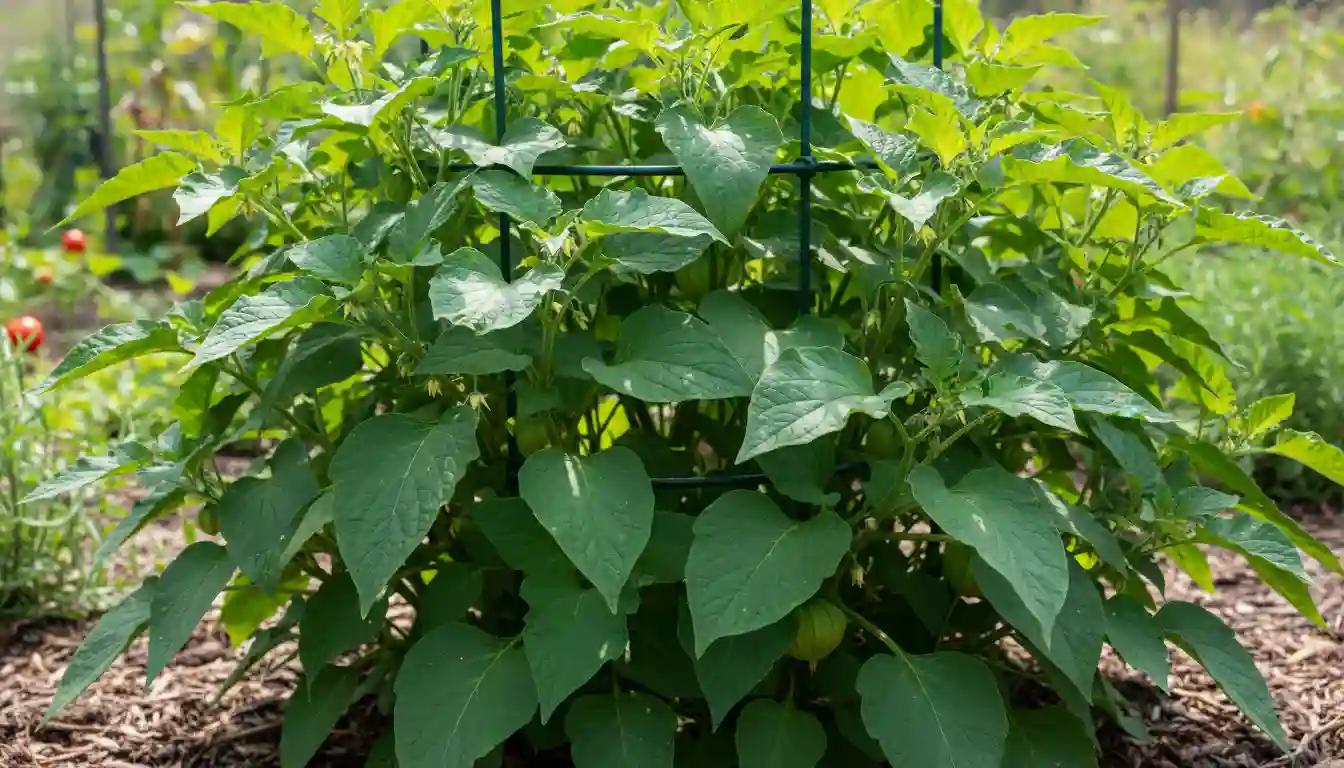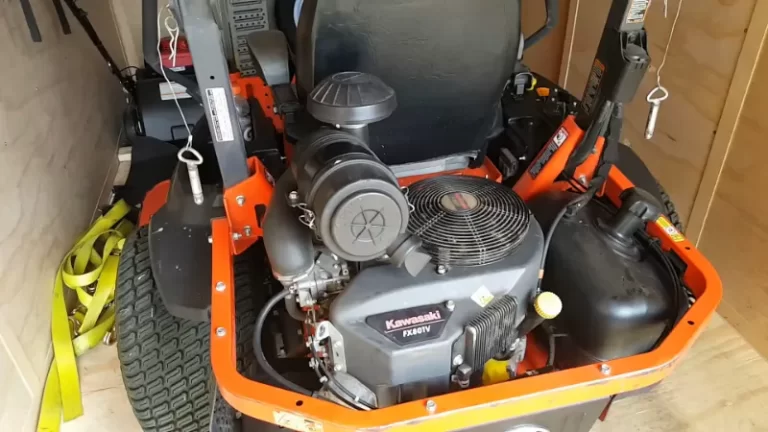Tomatillo Not Fruiting? Unlock Your Plant’s Hidden Potential
There are few gardening sights more frustrating than a tomatillo plant that looks the picture of health—lush, green, and sprawling—yet refuses to produce any fruit. You see the vibrant yellow flowers bloom, feel a surge of anticipation, and then watch as they wither and fall, leaving behind empty, papery husks or nothing at all. This common problem can leave even experienced gardeners scratching their heads.
The good news is that a barren tomatillo plant is almost always a solvable issue. The reasons for a lack of fruit are typically straightforward, revolving around the unique needs of this fascinating plant. By understanding the core causes, from pollination requirements to environmental stressors, you can transform your fruitless plant into a salsa-making superstar.
You'll Learn About
The Number One Culprit: A Lonely Tomatillo Plant
Before exploring any other possibility, it is crucial to address the most common reason for a tomatillo not fruiting: lack of a pollination partner. Tomatillos are not self-fertile, a trait known as being self-incompatible. This means the pollen from one flower cannot fertilize other flowers on the same plant.
For fruit to develop, a tomatillo plant requires cross-pollination from a second, separate tomatillo plant. Bees and other insects must carry pollen from the flower of one plant to the flower of another. Without a nearby companion, your plant will produce plenty of beautiful flowers, but they will never become fruit.
The Simple Solution: Plant More Than One
To guarantee a harvest, you must plant at least two tomatillo plants. They can be the same variety, as long as they are genetically distinct (i.e., grown from different seeds). Planting them relatively close, within about 25 feet, ensures that pollinators can easily travel between them, facilitating successful cross-pollination and robust fruit set.
When Two Isn’t Enough: Diagnosing Deeper Pollination Problems
Even with multiple plants, you might still face a disappointing harvest. If you have at least two tomatillos and they still aren’t fruiting, the issue likely lies with the pollinators themselves or environmental conditions that interfere with their work.
A Shortage of Pollinators
Modern gardens, especially in urban or suburban areas, can sometimes lack a healthy population of bees and other pollinating insects. The use of broad-spectrum pesticides can decimate local bee populations, while a lack of flowering diversity can fail to attract them to your yard in the first place.
To solve this, create a pollinator-friendly environment. Plant nectar-rich flowers like borage, marigolds, bee balm, and cosmos near your tomatillo patch. Avoid using insecticides, especially during the day when bees are most active. Providing a shallow dish of water with pebbles for bees to land on can also make your garden a more attractive stop.

The Manual Method: Hand Pollination
If attracting more pollinators isn’t enough, you can take matters into your own hands. Hand-pollinating tomatillos is a simple and highly effective technique. All you need is a small, soft paintbrush or a cotton swab.
Gently swirl the brush inside a flower on the first plant to collect the yellow pollen. Then, move to the second plant and gently brush that collected pollen onto the stigma (the central part) of its flowers. Repeat this process, moving back and forth between the plants, to ensure a thorough transfer of pollen. For those growing on a balcony, creating a suitable microclimate is key. Protecting plants from harsh wind, perhaps with something as simple as a screen similar to those used for a Juliette balcony, can prevent stress and blossom drop.
Environmental Stress: When Conditions Aren’t Right
Tomatillos are hardy, but they are not invincible. Certain environmental stressors can cause a plant to drop its blossoms before they can be pollinated, effectively halting fruit production. The primary culprits are temperature, water, and sunlight.
Extreme Temperatures
Like their tomato cousins, tomatillos are sensitive to temperature extremes. Temperatures consistently above 90°F (32°C) can denature the pollen, making it non-viable. Conversely, cold nights below 55°F (13°C) can also interfere with fruit set.
If you live in a hot climate, providing some afternoon shade with a shade cloth can protect plants during the most intense heat. For those with cooler nights, planting in a spot that retains warmth or using row covers can help maintain a more stable temperature.
Improper Watering
Inconsistent watering is a major source of plant stress. Both overwatering and underwatering can lead to blossom drop. The soil should be kept consistently moist but not waterlogged. Aim for deep, infrequent watering that encourages a strong root system, providing about one to one-and-a-half inches of water per week.
Applying a layer of organic mulch, like straw or wood chips, around the base of the plants can help regulate soil moisture and temperature, reducing overall stress.
Insufficient Sunlight
Tomatillos are sun-loving plants that require a minimum of six to eight hours of direct sunlight per day to thrive. Without adequate light, they will struggle to produce the energy needed for flowering and fruiting. A plant that appears “spindly” or “leggy” with sparse leaves is often a sign of insufficient light. Ensure your tomatillos are planted in the sunniest spot in your garden.
Nutrient Imbalance: The Problem with Pampering
It’s natural to want to feed your plants well, but with tomatillos, too much of a good thing can be detrimental. Specifically, an overabundance of nitrogen is a common cause of lush foliage with little to no fruit.
The Nitrogen Trap
Nitrogen is essential for leafy growth. When a plant receives too much, it puts all its energy into producing leaves and stems at the expense of flowers and fruit. Many all-purpose fertilizers are high in nitrogen, which can inadvertently sabotage your harvest.
To correct this, switch to a fertilizer that is lower in nitrogen and higher in phosphorus and potassium. Look for formulas with an N-P-K ratio like 5-10-10. Phosphorus is crucial for flower development and potassium supports overall plant health and fruit production. Apply this type of fertilizer once flowers begin to appear.
The Hidden Issue: Root and Pest Problems
Sometimes, the cause of a non-fruiting tomatillo lies beneath the surface or involves unwelcome visitors. These issues can weaken the plant, forcing it to conserve resources rather than produce fruit.
Root Compaction in Containers
When growing in containers, root space is a critical factor that is often overlooked. Tomatillos have extensive root systems. If the pot is too small, the roots become compacted and pot-bound, signaling to the plant that it lacks the resources to support fruit.
A single tomatillo plant requires at least a 5-gallon container, though a 10-gallon pot is even better. This gives the roots ample room to grow, ensuring the plant feels secure enough to fruit. This is analogous to diagnosing a mechanical issue; just like when you find your snowblower has no spark, a tomatillo plant with no fruit is signaling a core issue that needs investigation.
Pest and Disease Pressure
While generally resilient, tomatillos can be affected by pests like aphids, flea beetles, and cutworms. Diseases such as blight or anthracnose can also take a toll. A plant under attack will divert its energy to survival rather than reproduction.
Regularly inspect your plants for signs of pests or disease. Use organic control methods like neem oil or insecticidal soap for pests. Ensure good air circulation by staking or caging plants and watering at the base to prevent fungal diseases. Maintaining a clean garden environment is crucial. This extends beyond the garden beds themselves; ensuring surrounding areas are clean can reduce pest habitats, much like you would power wash oil stains off a driveway to maintain your property.
Troubleshooting Your Tomatillo: A Quick-Reference Guide
Use this table to quickly diagnose the most likely cause of your tomatillo’s fruiting failure and find the recommended solution.
| Symptom | Most Likely Cause | Primary Solution |
|---|---|---|
| Lush, green plant with lots of flowers, but no fruit or only empty husks form. | Pollination Failure: Only one plant is present. | Plant at least one more tomatillo plant nearby. |
| Multiple plants, many flowers, but they drop off without forming husks. | Environmental Stress or Lack of Pollinators. | Hand-pollinate; check temperatures, watering, and sunlight. Attract bees. |
| Extremely leafy, vigorous growth with very few or no flowers. | Too Much Nitrogen. | Stop using high-nitrogen fertilizer. Switch to a 5-10-10 or similar formula. |
| Plant is in a container, looks spindly or wilted, and drops flowers. | Root Compaction. | Transplant to a larger pot (minimum 5-gallon). Ensure consistent watering. |
| Plant looks unhealthy, has discolored leaves, visible insects, or spots. | Pest or Disease Pressure. | Identify the specific pest or disease and treat with appropriate organic methods. |
Patience is a Virtue: The Tomatillo Timeline
Finally, it’s important to remember that tomatillos can sometimes be late bloomers. The plant often goes through a significant period of vegetative growth, producing a large, bushy frame before it begins to set fruit in earnest. It’s not uncommon for the husks to form and enlarge for a while before the fruit begins to swell inside.
Be patient with your plants, especially after you’ve addressed the potential issues above. Often, once the conditions are right, a tomatillo plant that was once barren will suddenly explode with fruit. By ensuring you have at least two plants, managing environmental stress, providing the right nutrients, and keeping an eye out for pests, you will be well on your way to a bountiful harvest of these tangy, delicious fruits perfect for any salsa verde.

